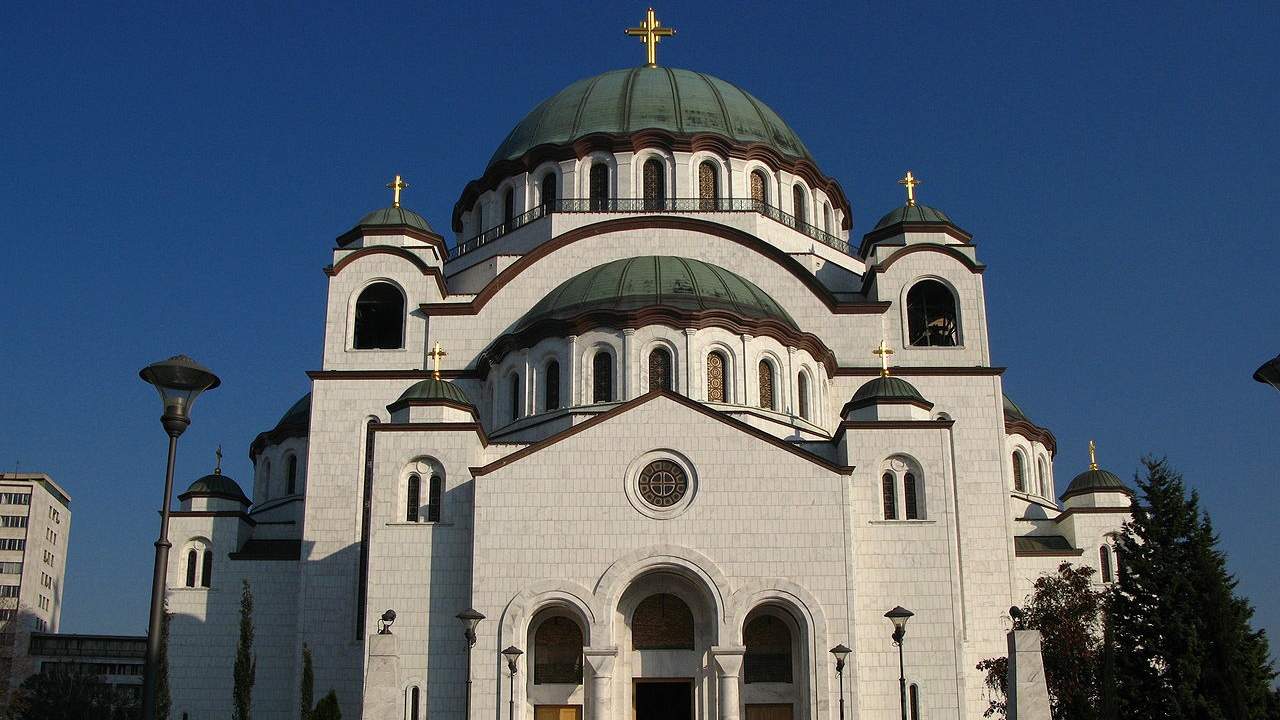St. Sava Temple
The St. Sava temple in Belgrade is an outstanding example of Byzantine architecture with modern elements, erected on the site where the relics of the Serbian saint, St. Sava, were burned in 1595. It was designed by architect Aleksandar Deroko, who carefully blended Russian Byzantine architecture with Serbian medieval style, creating a harmonious fusion of past and present. Construction of the temple began in 1935, but it was only completed in 2015, after overcoming the challenges posed by history. The church dominates the city skyline with its monumentality and height of 70 meters, featuring six golden domes, and is considered a symbol of the capital.
The walls are adorned with mosaics depicting scenes from Christian history and the Serbian Orthodox tradition, while the crypt housing the relics is adorned with frescoes. The facade of white marble accentuates its monumentality, and the church has become not only a spiritual but also a cultural landmark of Belgrade. The St. Sava temple has been declared a cultural monument of exceptional importance, and in 2003, it was placed under state protection due to its historical, cultural, and architectural significance.
The restoration of the church was finally completed in 2015, and this complex project, in which our team of experts participated, included the conservation of mosaics, with a special focus on the creation and installation of mosaic ornamentation between the stone arches of the crypt vaults, and preserving historical authenticity through the selection of materials used.
Year:
2013-2015Location:
Belgrade, SERBIALocation:
Belgrade, SERBIAConstruction Period:
2013-2015Client:
Holy Synod of the Serbian Orthodox Church




